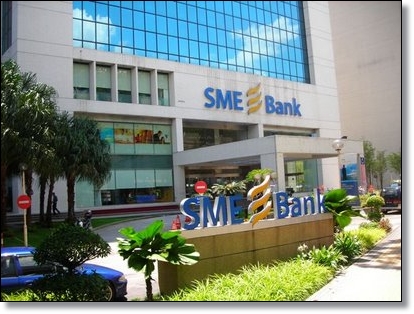Zambia: Formal Banks and the SME Sector

 |
| SME friendly bank Photo courtesy |
A survey conducted by the World Bank on Enterprise Development in Zambia (2007) identified poor access to finance as a major impediment to investment and growth in Zambia. Only 16% of firms surveyed reported having a loan or line of credit from a financial institution, compared with 23% for the region and 35% for all countries surveyed. Therefore, while Zambia’s cost of doing business index has progressively improved in recent years, access to finance continues to feature among the three key constraints to investment and growth.
It is, nevertheless, gratifying to note that commercial banks in Zambia are slowly realising the importance of the SME sector. At the end of December 2011, commercial banks’ lending to SMEs was at 21.0% of total loans, an improvement from 17.0% in December, 2010. This also represented an increase in lending to SMEs by 68.9% to K2,322.5 billion from K1,375.0 billion in 2010. Although this trend is impressive, much more needs to be done in order for the sector to meaningfully contribute to the growth of the country’s economy. Provision of finance to the SMEs can be a leading conduit for transforming our economy by opening up business opportunities as well as channeling resources more efficiently and effectively to the sectors that require it the most.
To see Stanbic Bank Zambia Limited, a commercial bank bring its services to the heart of the informal sector is an encouraging sign not only to the Bank of Zambia but to the entrepreneurs of Soweto Market as it demonstrates the confidence that the Bank has entrusted in the SME sector. It is also our hope that the perception of banks being intimidating to the informal sector will be a thing of the past thus alleviating the challenges faced by SMEs in accessing finance.
Furthermore, by partnering with the local entrepreneurs in Soweto Market which is the biggest market in Zambia, Stanbic Bank is encouraging a culture of banking for a myriad of Micro small and medium entrepreneurs. Because of the key role that SME sector plays in the economy, the Bank of Zambia will ensure that financial institutions are fully responsive to the unique characteristics of this sector.
The Bank of Zambia attaches great importance to initiatives that seek to enhance the provision of financial services to the underserved sectors of the economy. In recognition of the importance of the financial sector towards national development, the Bank of Zambia has continued to address various weaknesses in the Zambian financial system, among them being the low financial intermediation and limited access to finance.
The Bank of Zambia is encouraged to see banks in the country exploring new ways in which they can take banking services where they are needed the most and this is mainly to the unbanked. On its part, the Bank of Zambia has continued to implement measures to reduce the cost of borrowing. In the recent past, the Bank introduced the Policy Rate which is aimed at fostering transparency in the determination of lending rates. Under the new framework, all financial institutions are now required to realign the pricing of loans with reference to the Policy Rate. Furthermore, in January 2012, the Bank of Zambia introduced the new minimum capital requirements for commercial banks. The minimum primary capital was raised from K12 billion to K104 billion and K520 billion for locally and foreign owned banks, respectively. This measure is intended to make commercial banks more resilient to financial instability and provide banks with strong balance sheets that would meaningfully support economic activities in the country.
Stanbic Bank Zambia Limited was one of the first banks that reduced their lending rates in line with the objective of the Bank of Zambia policy rate. Stanbic also fulfilled the new capital requirements well ahead of the time set for the exercise. Before the end of May 2012, Stanbic had fully met the capital increase requirement well ahead of the deadline of 31st December 2012. We are confident that the measures taken collectively by the Bank of Zambia and commercial banks will provide enhanced scope for more financing at lower cost thereby facilitating further growth of the economy and the SME sector in particular.
I appeal to all SMEs and individuals that obtain financing from financial institutions to be responsible borrowers by ensuring that these loans are paid back. Failure to settle obligations destabilises the banking sector and leads to increased cost of borrowing. Banks play a crucial role in financial intermediation and this is enhanced by branch network expansion programs. Thus, there is need for all financial sector players including MSMEs to play their role in augmenting savings mobilization which will in-turn provide the necessary financing to the productive sectors in the economy.
I encourage banks to seek various ways of supporting the SMEs in underserved places.
By Dr Michael Gondwe,
Governor of the Bank of Zambia.
